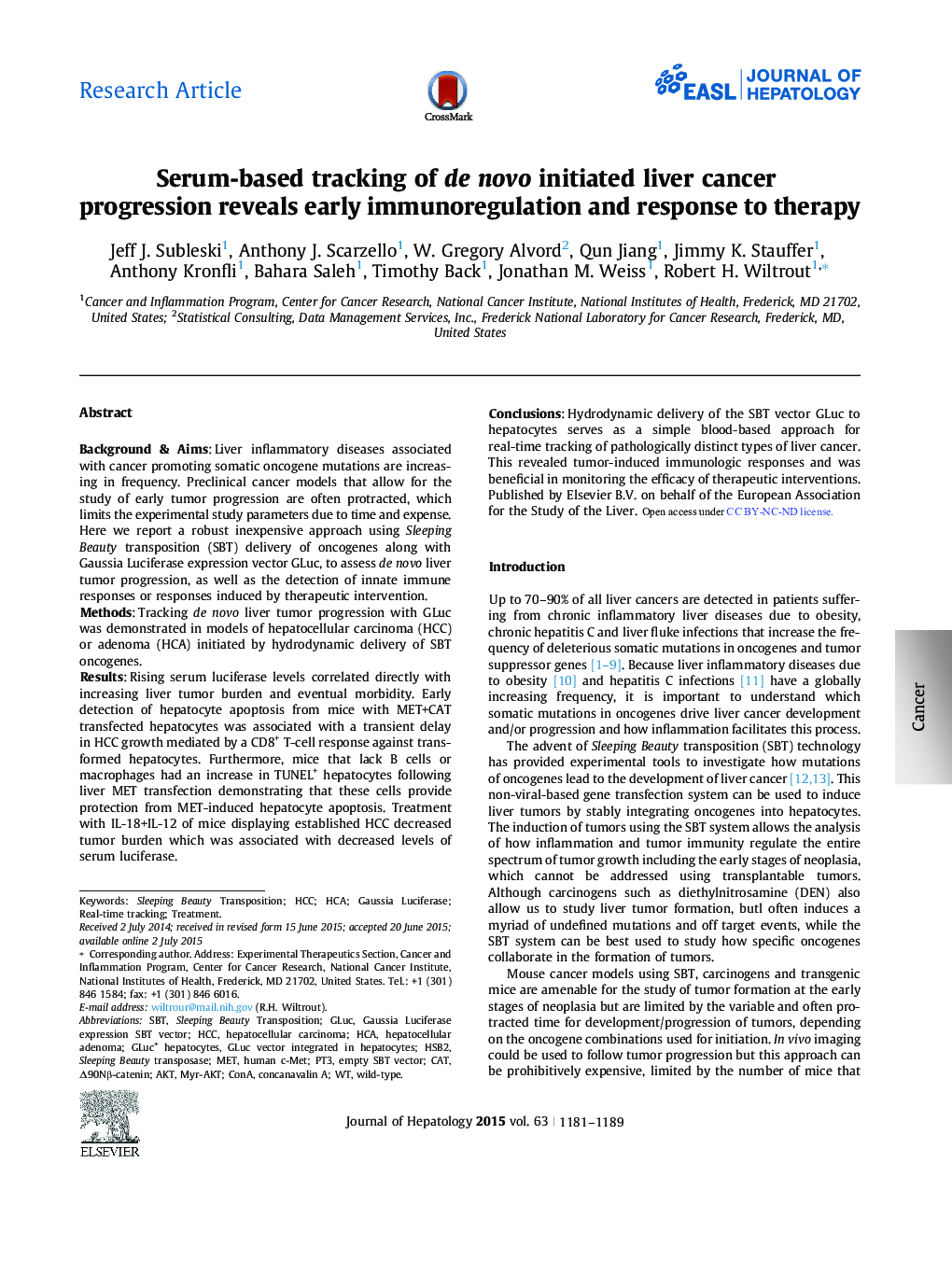| Article ID | Journal | Published Year | Pages | File Type |
|---|---|---|---|---|
| 6101318 | Journal of Hepatology | 2015 | 9 Pages |
Background & AimsLiver inflammatory diseases associated with cancer promoting somatic oncogene mutations are increasing in frequency. Preclinical cancer models that allow for the study of early tumor progression are often protracted, which limits the experimental study parameters due to time and expense. Here we report a robust inexpensive approach using Sleeping Beauty transposition (SBT) delivery of oncogenes along with Gaussia Luciferase expression vector GLuc, to assess de novo liver tumor progression, as well as the detection of innate immune responses or responses induced by therapeutic intervention.MethodsTracking de novo liver tumor progression with GLuc was demonstrated in models of hepatocellular carcinoma (HCC) or adenoma (HCA) initiated by hydrodynamic delivery of SBT oncogenes.ResultsRising serum luciferase levels correlated directly with increasing liver tumor burden and eventual morbidity. Early detection of hepatocyte apoptosis from mice with MET+CAT transfected hepatocytes was associated with a transient delay in HCC growth mediated by a CD8+ T-cell response against transformed hepatocytes. Furthermore, mice that lack B cells or macrophages had an increase in TUNEL+ hepatocytes following liver MET transfection demonstrating that these cells provide protection from MET-induced hepatocyte apoptosis. Treatment with IL-18+IL-12 of mice displaying established HCC decreased tumor burden which was associated with decreased levels of serum luciferase.ConclusionsHydrodynamic delivery of the SBT vector GLuc to hepatocytes serves as a simple blood-based approach for real-time tracking of pathologically distinct types of liver cancer. This revealed tumor-induced immunologic responses and was beneficial in monitoring the efficacy of therapeutic interventions.
